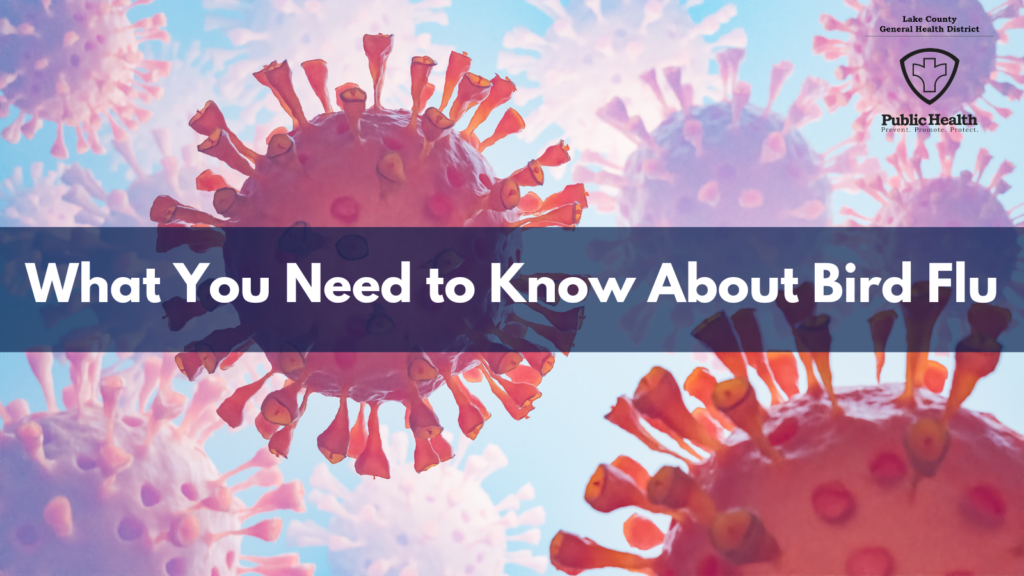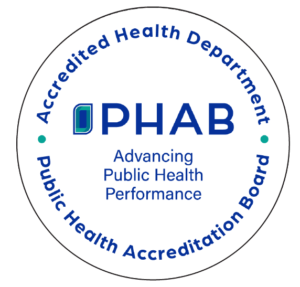The Bird Flu is a virus which is caused by an infection with avian influenza Type A viruses like H5N1 and H7N9.
Avian influenzas are categorized based on the severity of the symptoms they cause in chickens. Low pathogenic avian influenza viruses do not cause illness in poultry and are common in wild birds around the world. Highly pathogenic avian influenza (HPAI) virus, such as H5N1 detected in 2022, often causes death to poultry but symptoms in other birds can vary. Federal and state agencies, as well as universities, are actively monitoring for the virus in the United States.
Reporting
The Ohio Department of Natural Resources (ODNR) Division of Wildlife is monitoring all reports of dead wild birds in the state and has sent several samples collected in Ohio for testing to confirm HPAI. In December 2024 the Division of Wildlife shared that HPAI was suspected in several counties in Ohio. They also provided information about best practices if people come into contact with a dead wild bird. The Division of Wildlife asks people to call 1-800-WILDLIFE (1-800-945-3543) and report sightings of dead birds in groups of more than six.
Key Points:
- Most people have a low risk of getting sick with bird flu.
- Bird flu infections in people are rare, but possible.
- Most reported bird flu infections in people have happened after unprotected contact with infected animals or contaminated surfaces.
- Bird flu can also infect other animals besides birds. Bird flu can be passed from infected animals to people, but there have been no cases of the virus being passed from human to human in the United States.
Precautions
The public should observe wildlife from a distance. Exercising caution protects against possible exposure to pathogens that cause disease and minimizes disturbance to wildlife. Having a good personal hygiene routine is important when around domestic and wild birds and other animals. Thoroughly washing hands with soap and water (or with alcohol-based hand products, if the hands are not visibly soiled) is a very effective way to inactivate any influenza virus, including HPAI H5N1. These viruses are also inactivated with many common disinfectants such as detergents, 10 percent household bleach, rubbing alcohol and other commercial disinfectants. When using disinfectants with any amounts of bleach or alcohol, follow the manufacturer’s recommendations on how to use them properly.
Pet Owners
- Both cats and dogs can contract bird flu. Cats are more likely to experience severe illness or death. Keep your cats and dogs away from all dead or sick birds, including both wild birds and chickens.
Caution to farmers, backyard flock owners, and wildlife enthusiasts
- Avoid direct contact with sick or dead wild birds, poultry, and other animals.
How You Can Protect Yourself
- DO NOT drink raw or unpasteurized milk.
- DO NOT eat uncooked or undercooked poultry or beef.
- Cook poultry, eggs, and beef to safe internal temperatures to kill bacteria and viruses included avian influenza A viruses.
- Avoid direct contact with wild birds and sick or dead poultry or animals.
- Avoid people who you know are infected with bird flu; people can be contagious within the first few days of illness. People with pneumonia can be contagious for weeks due to high levels of the virus in their lungs.
How does bird flu spread?
- The bird flu virus spreads naturally in wild aquatic birds, including gulls, terns, and shorebirds, and wild waterfowl, such as ducks, geese, and swans.
- They can infect other wild birds, including poultry, and other animal species.
o Native Ohio birds are vulnerable to the virus, especially shorebirds, raptors, and waterfowl.
o Domestic chickens and turkeys are also vulnerable.
o In the U.S., the virus has been found in wild birds, commercial poultry, and dairy cattle. - Infected birds spread the virus through their saliva, mucous, and feces.
- Other animals might carry the virus in their respiratory secretions, organs, blood, or other bodily fluids, even in their milk.
If you believe you have been in contact with a sick or dead animal with bird flu, monitor yourself daily for symptoms. Mild symptoms include fever, cough, sore throat, difficulty breathing, eye tearing, redness, or irritation, headaches, runny nose, muscle or body aches and fatigue. More severe symptoms can occur like seizures, high fever, and altered consciousness. If you experience severe symptoms that prevent your usual activity along with the other severe symptoms, seek medical attention immediately.
Have you been in contact with an infected animal and developed symptoms of bird flu? Contact your medical provider and mention that you have come into contact with HPAI-infected birds or animals.


